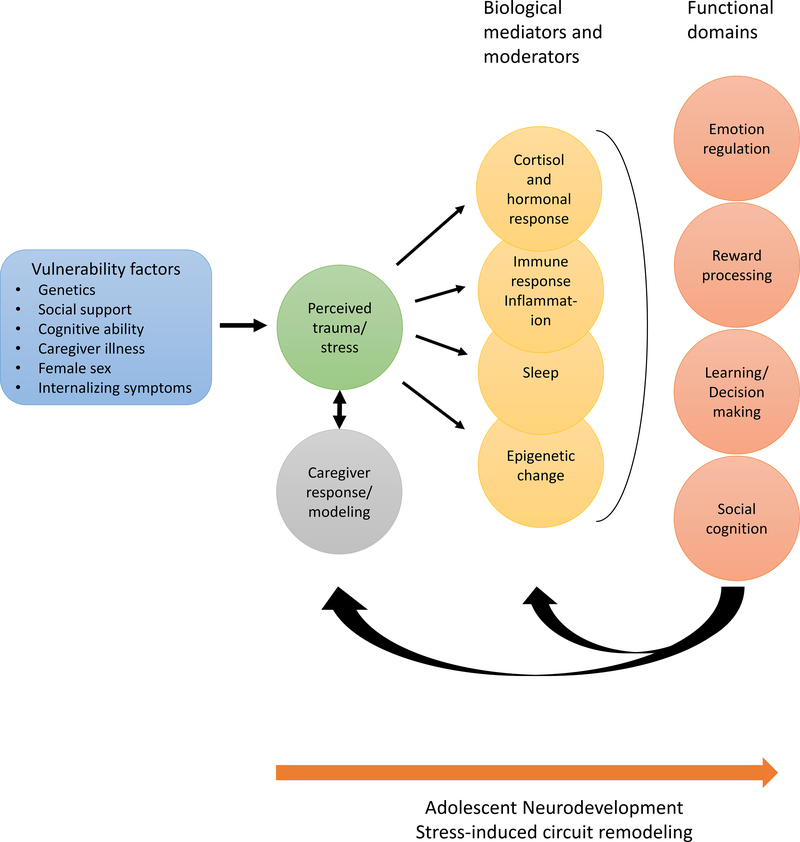Figure 1 :
Psychosocial and biological model linking early life trauma exposure to multiple systems and functional domains likely contributing to risk or resilience for adolescent PTSD. Pre-trauma factors such as genetic loading and social support (far left) moderate the impact of trauma (i.e. perceived trauma) on youth. In the peritraumatic period, caregiver (as well as peer) responses and emotional modeling further influence adolescent perception of the trauma and sense of safety in a reciprocal manner. The cumulative or ongoing perceived threat may then impact multiple biological systems in youth, which in turn impact neurodevelopmental processes involving multiple functional domains (far right). In an iterative feedback loop, changes in functional domains may ameliorate or exacerbate biological stress response systems such as sleep biology or inflammation, as well as caregiver and adolescent perceived threat and emotion regulation. This feedback loop may again ameliorate or exacerbate changes in biological stress response systems. With exception of emotion regulation, most of the biological systems and functional domains listed have received little study in adolescent PTSD.

